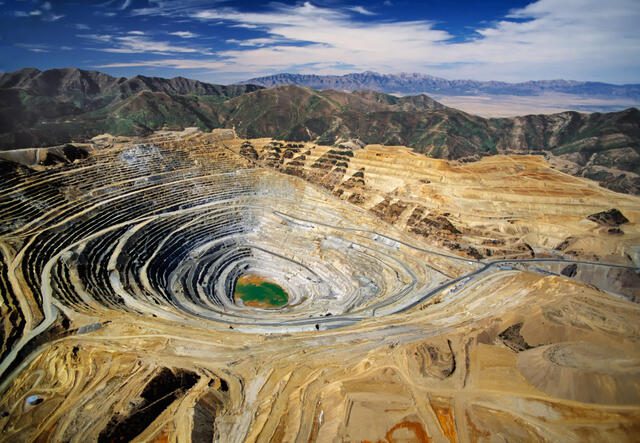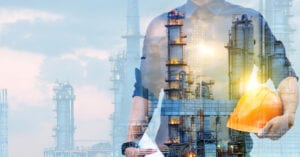The pressure from governments, shareholders, customers, supply chain partners and local communities on global Mining, Minerals, and Metals firms to decarbonize operations is mounting at an accelerating pace. The mining industry alone, according to McKinsey & Company, generates between 1.9 and 5.1 gigatons of greenhouse gas (GHG) emissions annually. Further down the supply chain, the metal industry contributes roughly 4.2 gigatons, mainly through steel and aluminum production. These numbers will have to drastically decrease if sustainable mining, cement production, and metals extraction and processing are to be achieved.

Fortunately, new digitized electrification and processing efficiency technologies are emerging that enable the Mining, Minerals, and Metals industry to begin meeting these important global CO2 reduction expectations. The issue boils down to executing strategic plans that can render basic operations more sustainable. At the same time, while managing this transition, Mining, Minerals, and Metals stakeholders must implement their emissions reduction plans in a way that preserves profitability and shareholder value.
Sustainable mining and metals processing requires an integrated approach
At Schneider Electric, our core expertise areas include both energy management and industrial automation. Across our extensive base of global clients, we have found that the most successful greenhouse gas emissions reduction projects involve simultaneous adjustments to five critical elements: energy efficiency, production management, maintenance management, sustainability, and integrated operations.
Listed below are several recommendations for how best to begin implementing this “five integrations” approach.
- Energy management – As a first step, we recommend that Mining, Minerals, and Metals organizations begin with an energy audit of the most energy-intensive areas of their operations. This allows the organization to set realistic improvement targets and to establish energy benchmarks. A logical next step is to equip sustainability teams with the proper tools that enable the measurement of energy consumption of core processes. Once a baseline of consumption is established, internal teams can then look for approaches and solutions that will reduce those numbers and achieve the highest optimization.
Examples of such tools include energy tracking and data analysis software, or renewable energy options such as microgrids that can help shift operational power generation from fossil fuel sources to renewable energy sources. Assistance with energy procurement methodologies that save money while lowering carbon footprint is also effective in increasing overall operational energy efficiency. For those who face capital constraints in tackling some of these issues upfront, explore the option of off-balance-sheet financing (where energy savings derived from the new technologies pay for that investment over time, using OpEx savings to fund the CapEx outlay).
- Production management – The Mining, Minerals, and Metals industries are experiencing a shift to value over volume. In the case of mining production management, for example, assets are 28% less productive today than a decade ago. This is due in large part to reserves requiring more processing per cubic foot as ore-to-rock ratios are dropping over time. To address these discrepancies, artificial intelligence applications and data analytics now allow processes to be optimized in real-time, resulting in higher quality yields while generating lower energy consumption. In addition, “remote everything” is beginning to dominate technology investment trends. The ability to work remotely represents a new way of working for many in the industry, and is helping to create a new generation workforce that can provide value from anywhere across the globe. This added dimension of not requiring experts to be physically on-site to manage production increases flexibility, further enhances the scope of influence of these subject matter experts, further safeguards worker health, and reduces travel-related CO2 emissions.
- Asset management – The COVID 19 pandemic has rapidly accelerated the migration to digitally and holistically integrated asset management and maintenance. For Mining, Minerals, and Metals firms, downtime represents energy loss as both equipment idle time and equipment restarts are energy-intensive. New condition monitoring and predictive maintenance analytics software can address such issues by identifying asset behavioral anomalies and equipment performance issues early before any delays or stoppages occur. The analytics and reporting reduce downtime risks by providing insights as to when maintenance should be planned and scheduled, in advance of an unanticipated outage situation.
- Sustainability – As notions such as the circular economy and green products gain steam, Mining, Minerals, and Metals organizations will find themselves more closely embracing approaches such as “embedded sustainability”: the incorporation of environmental, health, and social value into core business activities with no trade-off in price or quality. But achieving such a goal will require discipline in reigning in both Scope 1 (direct emissions from sources the organization owns or has control over) and Scope 3 (emissions related to supply chains) types of emissions. Schneider Electric’s experience in achieving its own internal and supply chain sustainability successes can serve as a good model for Mining, Minerals, and Metals firms that require assistance in monitoring, capturing, analyzing, benchmarking, and publishing Scope 1 and 3 emissions data. Sustainable initiatives, such as Schneider Electric’s Green Premium program (focused on structured sustainable resource, reuse, and well-being KPIs) can serve as useful examples for guiding Mining, Minerals, and Metals companies in their quest to further formalize sustainability efforts.
- Integrated operations and planning– The mechanism of integrated operations and planning, facilitated by innovative software, presents the biggest potential efficiency and productivity gains for Mining, Minerals, and Metals organizations. Such tools allow Mining, Minerals, and Metals stakeholders to manage their entire operation from resource to market. The solution enables optimization of plans and schedules, identifies risks and deviations, pinpoints inefficiencies, and presents the right information to the right people at the right time. The solution can increase productivity by up to 20 percent by driving operational efficiencies. The collection, integration, and analysis of information across production, maintenance, and energy management environments reduce the inherent risks of dealing with inaccurate and untimely siloed data. Such software tools allow companies to view their supply chains both as discrete components and as a single system that operates according to unified sustainability objectives and metrics.
To learn more about how Mining, Minerals, and Metals companies can accelerate their carbon emissions reductions, download the new Schneider Electric e-guide “Five innovative approaches to resource sustainability.”



